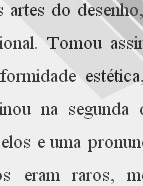

................................
He studied painting with an uncle, attended academies in Seville and Rome, founded an ephemeral drawing class in Lisbon, and worked in Mafra for over a decade, where he intensified his erudite slant in works such as Conversações sobre a Pintura, Escultura e Arquitectura [Conversations on Painting, Sculpture and Architecture] (1794-1798) and Nova Academia de Pintura [New Painting Academy] (1817), and in the translation of Bellori's Honras da Pintura, Escultura e Arquitectura [Honours of Painting, Sculpture and Architecture] (1815). The Colecção has become a compulsory reference for its bibliographical synthesis and information regarding the art of its time.
Unlike Taborda, he did not research archival sources, but took advantage of key works (almost unknown at the time) and sought the "interaction of art forms in the historical fabric" (Paulo Varela Gomes, A Cultura Arquitectónica e Artística em Portugal no Século XVIII [Architectural and Art Culture in 18th Century Portugal], 1988, p. 172). In 1822, Almeida Garrett published a brief "essay on the history of painting" as an appendix to the poem O Retrato de Vénus [The Portrait of Venus]. Although he intended to give the "nation something it did not have, namely a critical biography of its painters," he used Taborda’s work, going no further, neither in knowledge, method, nor sources. Garrett reorganised the available information against a historical scheme defined by "four epochs": 11th-14th, 15th-16th, 17th, and 18th-19th centuries. In addition to biographical details, he made comparative appraisals in terms of merits and faults, thus revealing a clear critical attitude.
After this beginning marked by biographical record, art historians deepened their erudition and extended it to the "descriptive memories" of buildings. Francisco de São Luís Saraiva (Ponte de Lima, 1766 - Lisbon, 1845), a Benedictine scholar, a doctor in theology, a professor at the Colégio das Artes [College of Arts], the dean who reformed the Universidade de Coimbra [University of Coimbra] during the Vintismo1, president of the Câmara de Deputados [Chamber of MPs], vice-president of the Câmara dos Pares [Chamber of Peers], and patriarch cardinal of Lisbon, studied historical and linguistic studies and wrote a Lista de Alguns Artistas Portugueses [List of Some Portuguese Artists], compiled between 1825 and 1839, and a Memória Histórica Sobre o Mosteiro da Batalha] [Historical Memoir of the Monastery of Batalha] (1827). Cardinal Saraiva's work was based on (and almost limited to) documentary research. "With him," stated José-Augusto França, "it may be said that a particular line of art historiography in Portugal was initiated, a line of philological erudition and critical detachment." (A Arte em Portugal no Século XIX [Art in 19th Century Portugal], 1990, vol. I, p. 392.).
1political situation that dominated Portugal between August 1820 and April 1823
